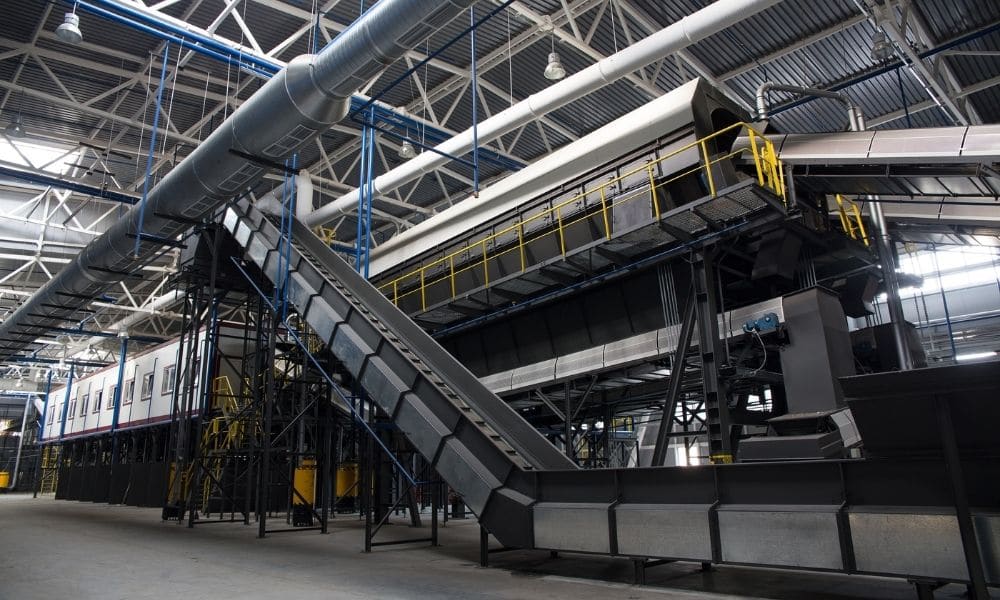
There are many different types of overhead conveyors. However, it is better to break them up into categories according to their specific functions and features. There are three major ways that overhead conveyors can differ from one another. The first is if it is powered or free; the second way is if the track is enclosed or open. The last way to differentiate between conveyors is whether are synchronous or not. From there, the overhead conveyors differentiate themselves with a variety of features specific to each conveyor. In fact, individual overhead conveyors are so different that it is hard to compare them to each other because they fulfill vastly different goals.
Powered
A powered overhead conveyor system works by using a motor and electricity. There are a number of different forms of these conveyor systems, but they all share the fact that they move materials in one direction and are powered by a motor. Although they do require power to move, they are quite energy-efficient and can run without human interaction.
Free
Free overhead conveyors do not rely on power or motors to move materials. They can often move materials in multiple directions as well. The problem with free overhead conveyors is that they require manual labor to move items. Someone has to constantly work them to move items and materials, but they are good for moving heavy objects by hand.
Open Track
An open track refers to the state in which the conveyor transports materials. An open track leaves both the material and the rail that the material travels on exposed to the open air. This can leave the system susceptible to environmental damage, but it is much easier to install and can generally carry more.
Enclosed Track
An enclosed overhead conveyor system contains the whole system within itself. This protects the materials during transport and limits many of the risks of an overhead system. A totally enclosed belt conveyor can transport goods across buildings without worrying about the weather. However, they are usually very complex and have a limit to the number of materials they can carry at once.
Synchronous and Asynchronous
This is a simple distinction between overhead conveyors systems. It refers to whether the conveyor system keeps the objects it transports in an ordered fashion or not. A synchronous conveyor will keep all the materials an equal distance apart and move them at a consistent rate, while an asynchronous system will not.
These are the different types of overhead conveyors and how they are unique. Hopefully, you should now know what you are looking for in your own conveyor systems.
